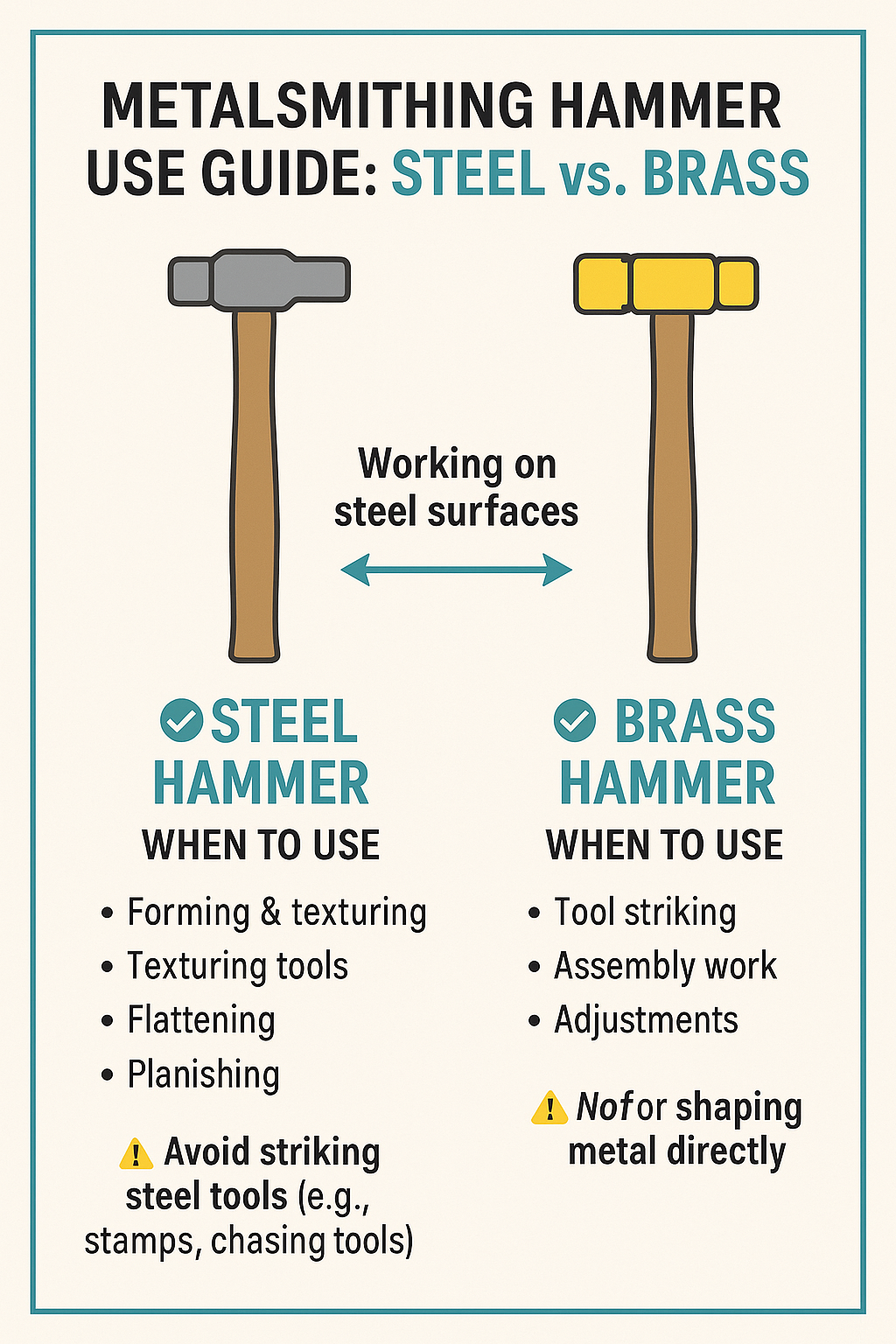Metalsmithing Hammer Use Guide: Steel vs. Brass
✅ Steel Hammer — When to Use
-
Purpose: Used when you need precision force or when working directly with metal that can withstand a harder impact.
-
Common Uses:
-
Forming & Texturing: Ideal for shaping metal (e.g., doming, raising, forging).
-
Texturing Tools: Used with metal stamps or texturing tools on steel blocks.
-
Flattening: Excellent for flattening wire or sheet metal.
-
Planishing: Used to smooth metal after forming (with a polished face).
-
-
Surface Compatibility:
-
Always used on a steel block or anvil.
-
Suitable for non-ferrous metals (copper, brass, silver, gold) but can leave marks if the face isn't polished.
-
-
Caution:
-
Avoid using on delicate or finished pieces — can cause unwanted marks or dents.
-
Never strike steel tools (like chasing tools or stamps) with a steel hammer — risk of chipping tools.
-
✅ Brass Hammer — When to Use
-
Purpose: Used when you need force without damaging tools or delicate surfaces.
-
Common Uses:
-
Tool Striking: Perfect for striking steel tools such as:
-
Metal stamps
-
Chasing tools
-
Center punches
-
-
Assembly Work: Tapping mandrels, dapping punches, bezel setting tools without damaging them.
-
Adjustments: Useful when adjusting or bending pieces gently without leaving heavy marks.
-
-
Surface Compatibility:
-
Can be used on steel surfaces (blocks, mandrels) without damaging them.
-
Softer than steel so it reduces rebound and reduces risk of chipping tools.
-
-
Caution:
-
Not suitable for shaping metal directly — brass is softer and will mushroom or deform over time.
-
Not for texturing or planishing metal sheets.
-


No comments to display
No comments to display